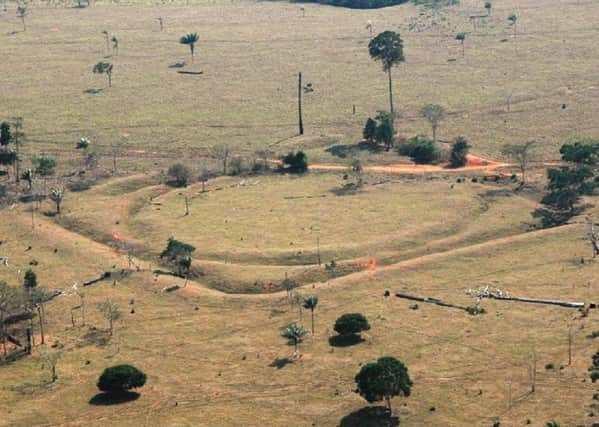Parts of '˜uninhabited' Amazon were once home to up to a million


Archaeologists have uncovered evidence of hundreds of villages in the rainforest, away from major rivers, that were home to different communities speaking a variety of languages.
It had been assumed that ancient communities preferred to live near these waterways but new research has found this was not the case.
Advertisement
Hide AdAdvertisement
Hide AdResearchers say the discovery fills a major gap in the history of the Amazon and provides further evidence that the rainforest has been heavily influenced by those who lived in it.
A team from the University of Exeter found the remains of fortified villages and mysterious earthworks called geoglyphs, man-made ditches with square, circular or hexagonal shapes.
Some of these earthworks show no evidence of being occupied and it is possible that they were used as part of ceremonial rituals.
Dr Jonas Gregorio de Souza, from the University of Exeter’s Department of Archaeology, said: “There is a common misconception that the Amazon is an untouched landscape, home to scattered, nomadic communities.
“This is not the case. We have found that some populations away from the major rivers are much larger than previously thought, and these people had an impact on the environment which we can still find today.
“The Amazon is crucial to regulating the Earth’s climate, and knowing more about its history will help everyone make informed decisions about how it should be cared for in the future.”
Archaeologists uncovered the remains of villages and geoglyphs in the current Brazillian state of Mato Grosso.
They analysed charcoal remains and excavated pottery to establish that a 1,800km stretch of southern Amazonia was continuously occupied from 1250 until 1500 by people living in fortified villages.
Advertisement
Hide AdAdvertisement
Hide AdThe experts estimate that there would have been between 1,000 and 1,5000 enclosed villages and say two-thirds of these sites are yet to be discovered.
Their research estimates that there were 1,300 geoglyphs across 400,000 square kilometres of southern Amazonia, with 81 found in the area surveyed as part of the study. Villages were often found nearby, or inside the geoglyphs, and were connected through a network of causeways.
The research, funded by National Geographic and the European Research Council project PAST, is published in the journal Nature Communications.